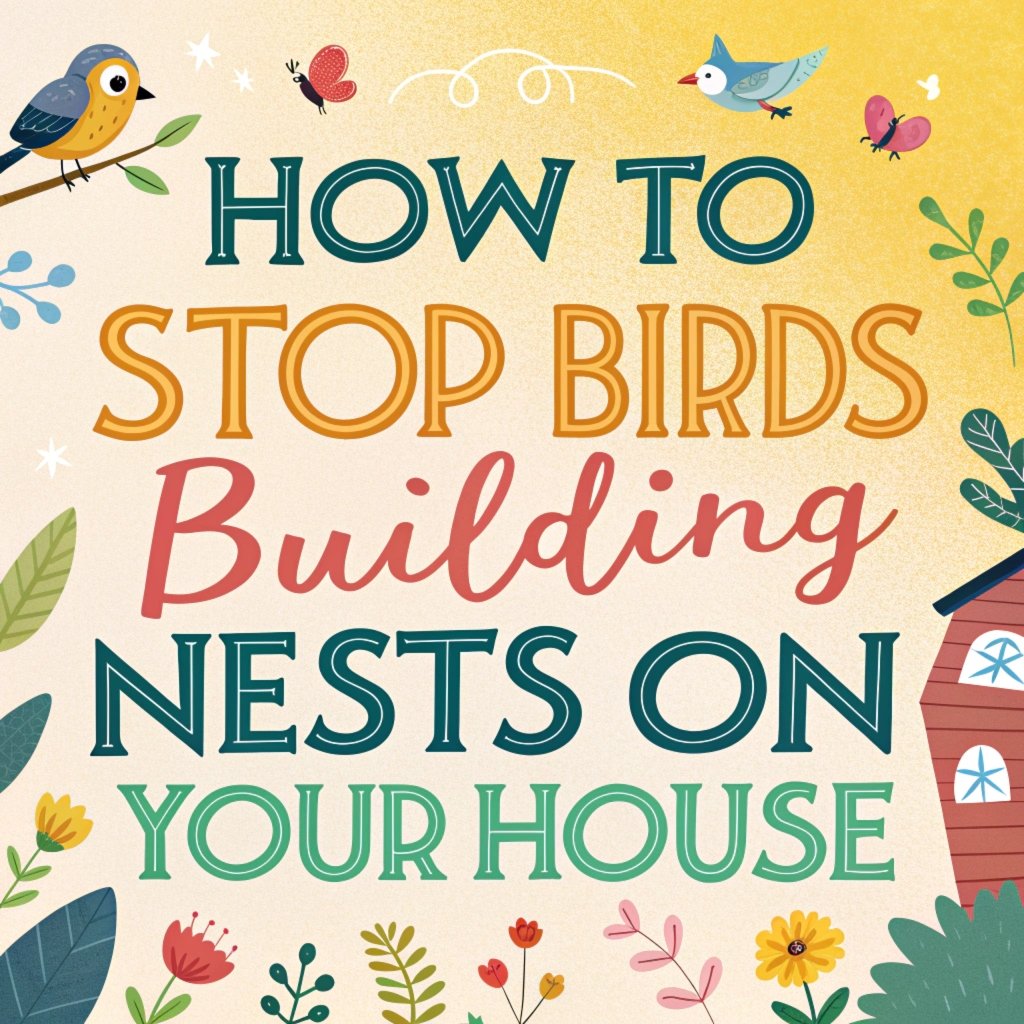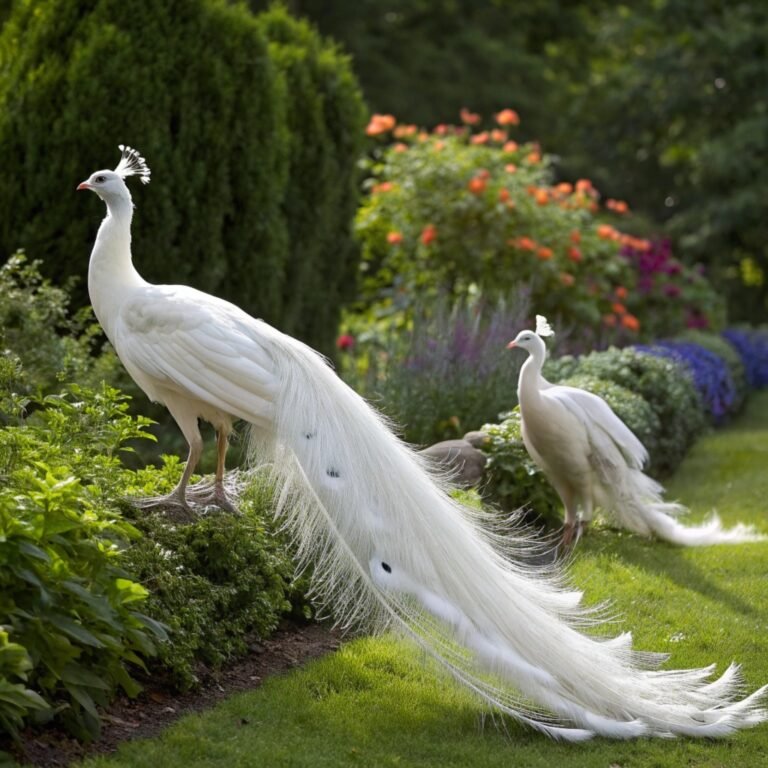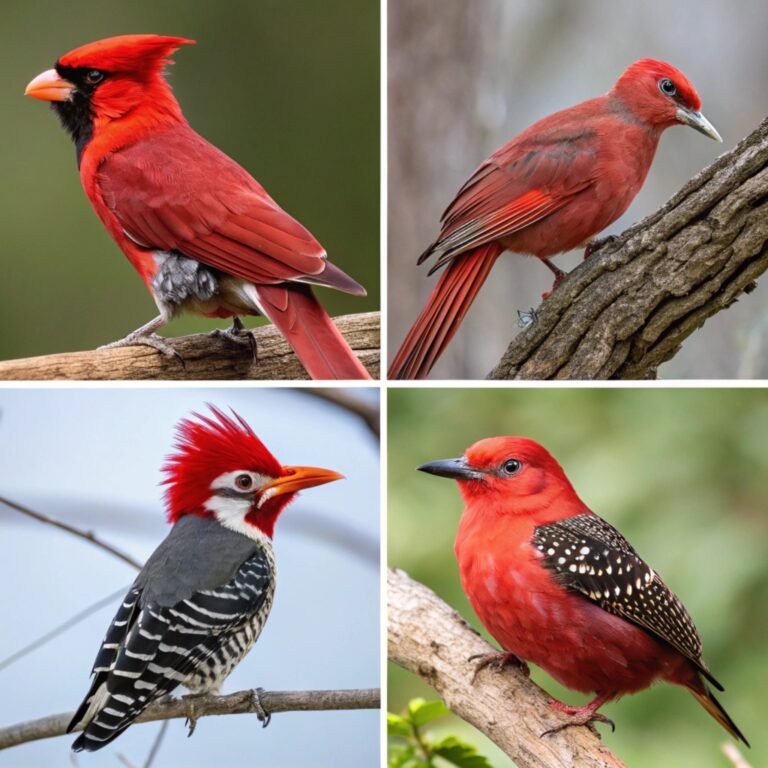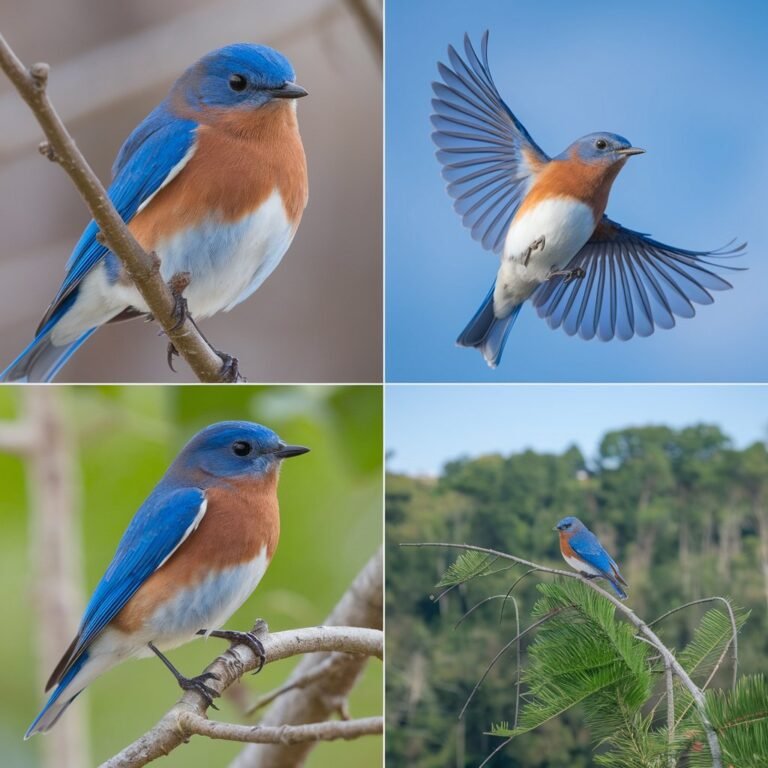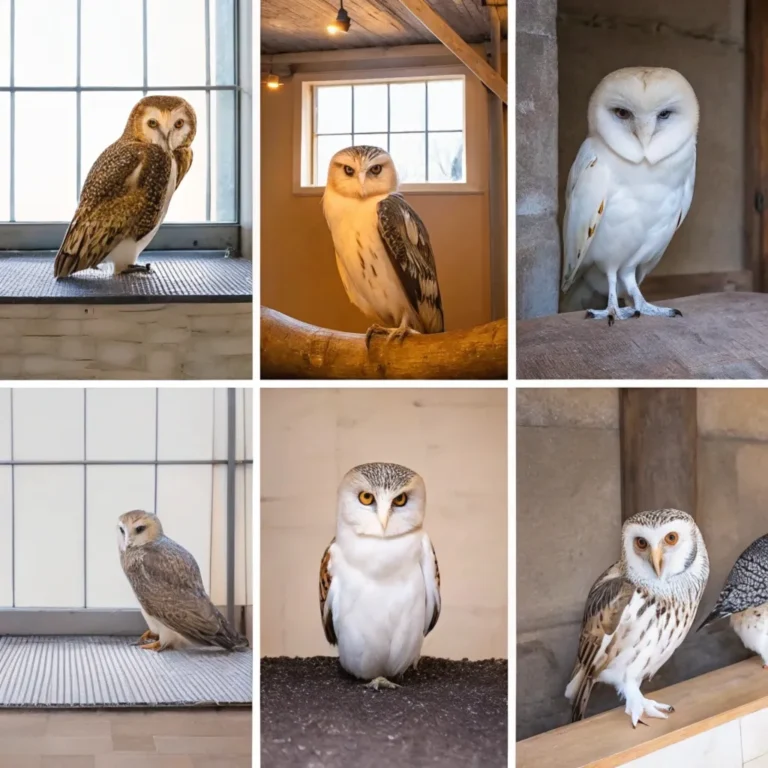How to Stop Birds Building Nests on Your House – Effective Strategies and Tips for Homeowners
Birds are fascinating creatures, but when they choose your house as their nesting site, it can lead to various problems.
From clogged gutters to damaged roofs, bird nests can cause significant issues for homeowners.
This comprehensive guide explores effective strategies to prevent birds from building nests on your house.
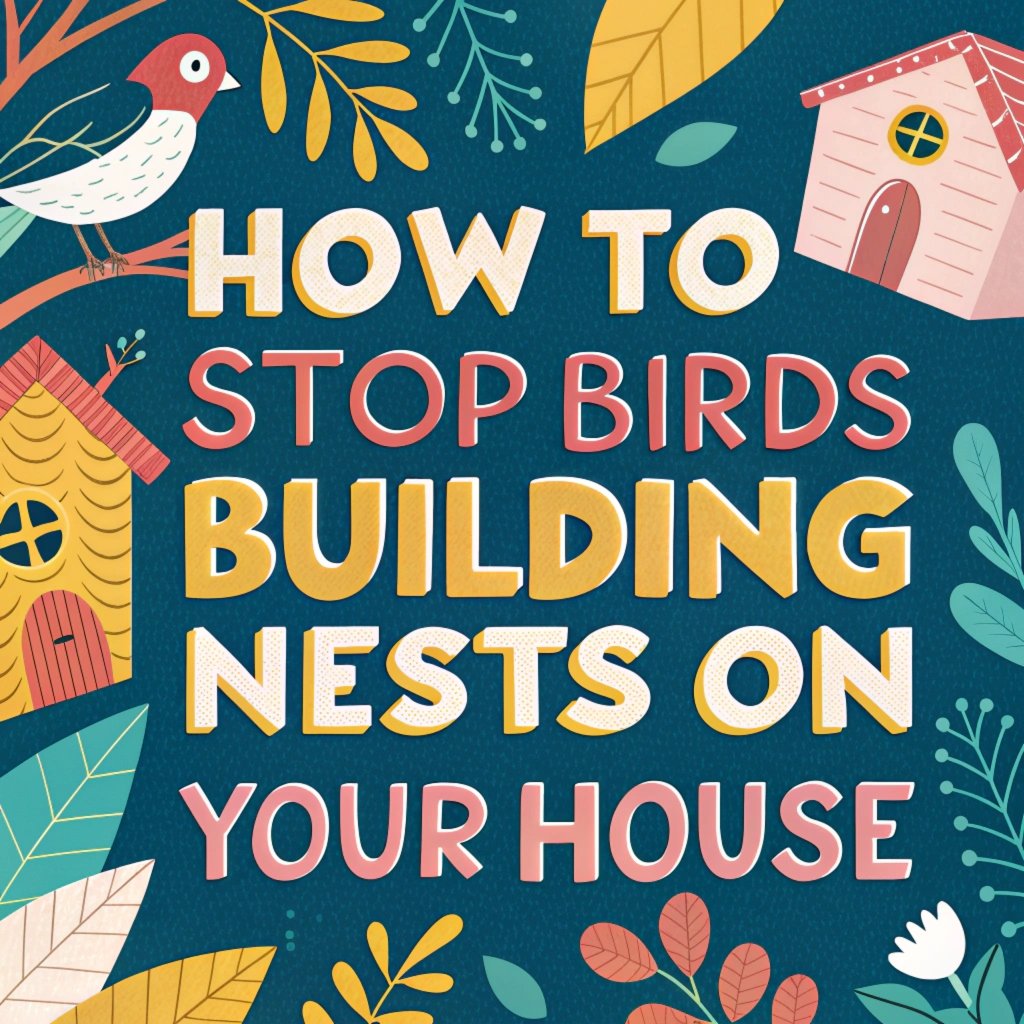
Key Takeaways
- Bird nests can cause structural damage to homes, including clogged gutters and roof damage.
- Use humane methods to deter birds, respecting wildlife laws and regulations.
- Physical barriers like netting and spikes are effective in preventing nesting.
- Natural repellents such as certain scents can keep birds away without causing harm.
- Technological solutions like motion-activated sprinklers can deter birds effectively.
- Regular maintenance and cleaning prevent birds from finding suitable nesting spots.
- Professional services are available for severe bird problems.
- Community efforts can help manage bird populations in urban areas.
- Balancing bird conservation with home protection is crucial for responsible homeowners.
- Seasonal strategies are important for year-round bird nest prevention.
Understanding Why Birds Nest on Houses
Birds often choose houses as nesting sites because they provide shelter and safety from predators.
The eaves, gutters, and other nooks of a house mimic the natural crevices found in trees and cliffs. These areas offer protection from harsh weather conditions and potential threats.
Residential structures provide birds with elevated positions, giving them a clear view of their surroundings.
This heightened vantage point allows them to spot approaching predators easily. Additionally, human dwellings often have nearby food and water sources, making them attractive to nesting birds.
Understanding this behavior is crucial in developing effective strategies to prevent birds from nesting on your property.
By recognizing what attracts birds to your home, you can take targeted measures to make your house less appealing as a nesting site.
Common Bird Species That Nest on Buildings
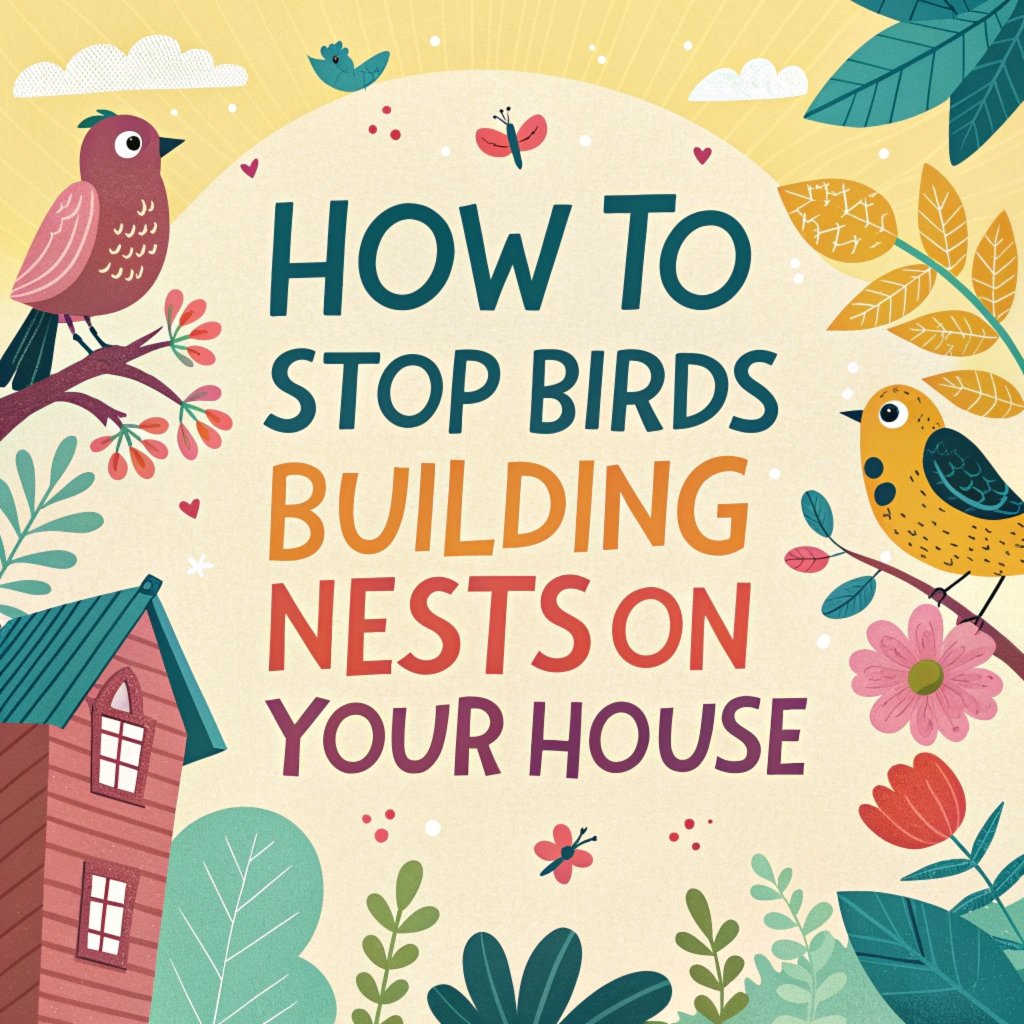
Several bird species are known to nest on buildings, each with its own nesting habits and preferences.
Pigeons are perhaps the most common urban nesters, often found on ledges, rooftops, and in attics. These birds are adaptable and can thrive in various urban environments.
Sparrows frequently build nests in small crevices, such as gaps in brickwork or under eaves. Their small size allows them to access tight spaces that larger birds cannot.
Starlings are another species that often nests on buildings, preferring cavities in walls or roof spaces.
Swallows and martins are known for their mud nests, which they often construct under eaves or on the sides of buildings.
These birds are migratory and return to the same nesting sites year after year. Understanding the specific species nesting on your property can help you choose the most effective deterrent methods.
The Impact of Bird Nests on Your Home
Bird nests can have significant negative impacts on your home. One of the most common issues is clogged gutters.
Nests built in gutters can block water flow, leading to water damage to your roof and walls. This blockage can also cause gutters to sag or pull away from the house due to the added weight.
Roof damage is another serious concern. Birds may dislodge shingles or tiles while building their nests, creating potential leak points.
Their droppings are highly acidic and can corrode roofing materials over time. In some cases, nests built near electrical equipment can pose a fire hazard.
Bird droppings not only create unsightly stains on walls and windows but can also pose health risks. They can carry diseases and parasites that are harmful to humans.
The accumulation of droppings can also lead to slip hazards on walkways and driveways.
Legal Considerations for Removing Bird Nests
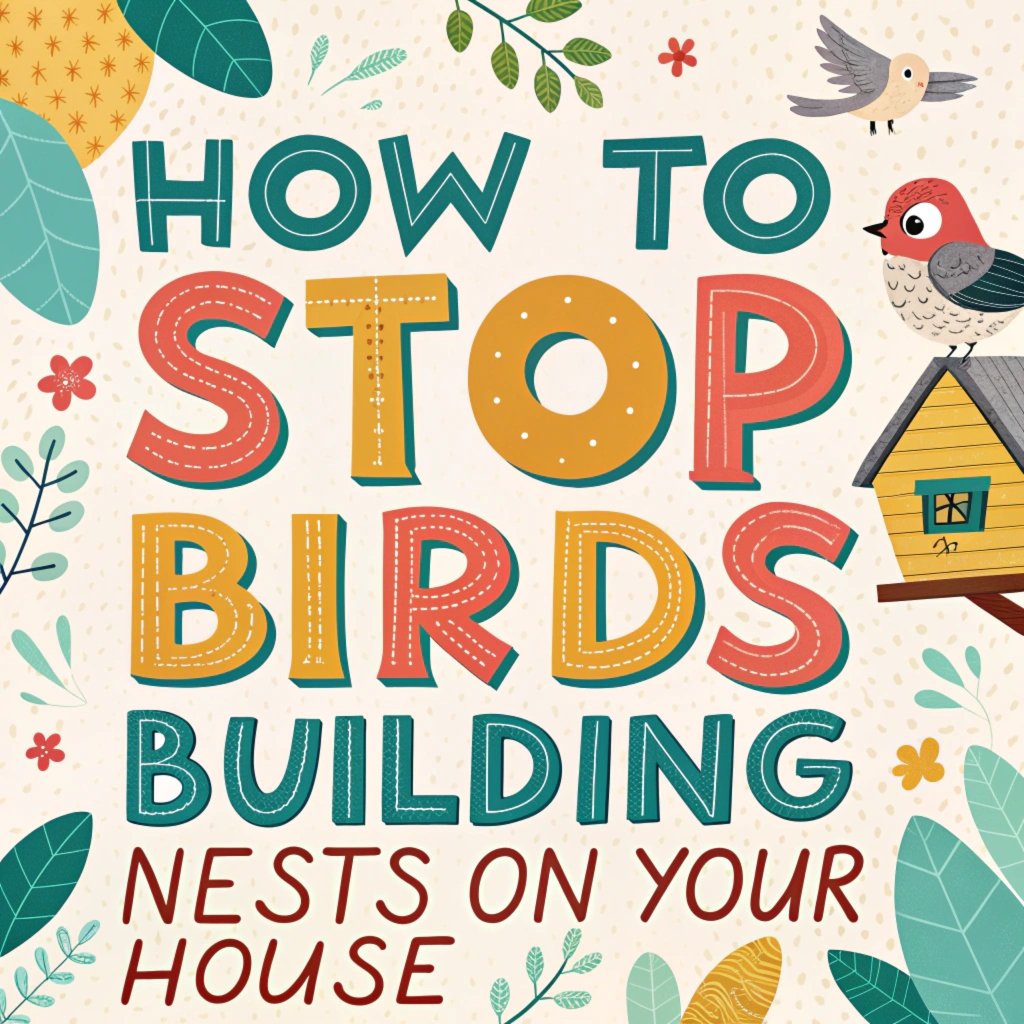
Before taking any action to remove bird nests, it’s crucial to be aware of the legal protections in place for birds and their nests.
Many bird species are protected by federal laws, such as the Migratory Bird Treaty Act in the United States. These laws make it illegal to remove or destroy active nests without proper permits.
It’s important to check local regulations before attempting to remove any bird nests. In many cases, it’s only legal to remove nests that are under construction or abandoned.
Active nests with eggs or young birds are typically protected and must be left undisturbed.
If you’re unsure about the legal status of a nest on your property, it’s advisable to consult with a local wildlife expert or authority.
They can provide guidance on the appropriate course of action and help ensure you’re in compliance with all relevant laws and regulations.
Effective Methods to Deter Birds from Nesting
There are several effective methods to deter birds from nesting on your house. Physical barriers are among the most reliable options.
Installing bird netting over potential nesting areas can prevent birds from accessing these spaces. This method is particularly effective for larger areas like balconies or under eaves.
Bird spikes are another physical deterrent that can be installed on ledges, window sills, and other flat surfaces where birds might land. These spikes make it uncomfortable for birds to perch or nest, encouraging them to find alternative locations.
Visual deterrents can also be effective. Reflective objects like old CDs or aluminum foil strips can create flashes of light that birds find disorienting.
Similarly, predator decoys such as plastic owls or hawks can scare birds away, although it’s important to move these regularly to prevent birds from becoming accustomed to them.
Using Physical Barriers to Prevent Nesting
Physical barriers are one of the most effective ways to prevent birds from nesting on your house. These methods create obstacles that make it difficult or impossible for birds to access potential nesting sites.
Bird netting is a popular choice for larger areas. It can be installed over eaves, balconies, or any open spaces where birds might nest.
Bird spikes are another effective physical barrier. These can be installed on ledges, window sills, and other flat surfaces where birds might land or attempt to nest.
The spikes make these areas uncomfortable for birds, discouraging them from settling there. It’s important to note that these spikes are designed to deter birds, not harm them.
For smaller openings, such as vents or gaps in the building structure, wire mesh or hardware cloth can be used to block access. These materials allow for airflow while preventing birds from entering. When installing any physical barriers, it’s crucial to ensure they are securely fastened to prevent birds from dislodging them.
Natural Repellents to Keep Birds Away
Natural repellents offer a humane and environmentally friendly way to deter birds from nesting on your property.
Many birds have a strong aversion to certain scents, which can be used to your advantage. Peppermint oil is known to be particularly effective. You can create a spray by mixing a few drops of peppermint oil with water and applying it to areas where birds frequently land or nest.
Citrus scents are another natural deterrent that birds tend to avoid. Lemon or orange peels can be placed in areas where birds are problematic. Alternatively, a citrus-scented spray can be made by boiling citrus peels in water and then cooling and straining the liquid.
Some homeowners have found success with vinegar solutions. A mixture of water and white vinegar can be sprayed on surfaces to deter birds.
However, it’s important to note that vinegar can be corrosive to certain materials, so care should be taken when using this method.
Technological Solutions for Bird Deterrence
Advancements in technology have provided new and effective ways to deter birds from nesting on houses. Motion-activated sprinklers are a popular choice.
These devices detect movement and release a short burst of water, startling birds and discouraging them from returning to the area. This method is particularly effective as it uses an element of surprise.
Ultrasonic devices emit high-frequency sounds that are unpleasant to birds but generally inaudible to humans. These devices can be strategically placed around your property to create an inhospitable environment for birds.
However, it’s worth noting that some birds may become accustomed to these sounds over time, so they may need to be used in conjunction with other deterrent methods.
LED lights designed specifically for bird deterrence are another technological solution. These lights emit wavelengths that birds find disorienting, making the area less attractive for nesting. Some models are solar-powered, making them an energy-efficient option for long-term use.
Maintaining a Bird-Free Home Environment
Regular maintenance is key to keeping your home bird-free. Start by inspecting your property regularly for potential nesting sites.
Look for gaps in the roof, loose tiles, or damaged siding that birds might use as entry points. Repair these areas promptly to prevent birds from taking advantage of them.
Keep your gutters clean and free of debris. Clogged gutters not only attract nesting birds but can also lead to water damage to your home.
Consider installing gutter guards to reduce the accumulation of debris and make your gutters less attractive to birds.
Trim trees and shrubs near your house regularly. Overgrown vegetation can provide birds with easy access to your roof and eaves.
By maintaining a clear space between plants and your house, you make it more difficult for birds to approach potential nesting sites.
DIY Solutions to Stop Birds from Nesting
There are several do-it-yourself solutions that can effectively deter birds from nesting on your property. One simple method is to hang reflective objects around your house.
Old CDs, aluminum pie plates, or Mylar balloons can create flashes of light that birds find disorienting. Move these objects periodically to prevent birds from becoming accustomed to them.
Creating visual barriers can also be effective. Stretch thin wire or fishing line across areas where birds like to perch.
The wire is difficult for birds to see and makes landing uncomfortable, discouraging them from returning. Ensure the wire is taut and securely fastened.
Homemade repellent sprays can be created using ingredients like chili peppers or vinegar. Mix these with water and spray on areas where birds frequently land.
However, be cautious when using these sprays as they may damage certain surfaces or plants.
Professional Services for Bird Control
For severe bird problems or situations where DIY methods have proven ineffective, professional bird control services can provide comprehensive solutions.
These experts have access to specialized equipment and techniques that may not be available to the average homeowner.
Professional services often begin with a thorough inspection of your property to identify all potential nesting sites and entry points.
They can then develop a customized plan to address your specific bird problem. This may include a combination of physical barriers, repellents, and other deterrent methods.
Many professional services offer humane removal of existing nests and birds, ensuring compliance with all relevant wildlife protection laws.
They can also implement long-term prevention strategies, such as installing specialized netting or electrified track systems that discourage birds from landing on your property.
Seasonal Tips for Bird Nest Prevention
Bird nesting behavior varies throughout the year, so it’s important to adjust your prevention strategies accordingly.
In spring, when most birds begin nesting, be particularly vigilant. Inspect your property thoroughly and address any potential nesting sites before birds have a chance to settle in.
During summer, continue to monitor your property regularly. This is when many birds will be raising their young, and they may attempt to build second nests if their first brood is successful. Keep vegetation trimmed and maintain any deterrent methods you’ve put in place.
In fall, focus on cleaning and maintenance. Remove any abandoned nests (ensuring they are truly abandoned) and clean areas where birds have been nesting.
This can help prevent birds from returning to the same spots next year. Winter is an ideal time to implement more permanent solutions, such as installing physical barriers, as fewer birds are actively nesting during this season.
Community Efforts in Bird Nest Management
Community-wide approaches can be highly effective in managing bird populations and reducing nesting on buildings. Coordinated efforts ensure that birds don’t simply move from one property to another within the neighborhood.
Consider organizing a community meeting to discuss bird-related issues and develop a collective strategy.
Educate your neighbors about the importance of not feeding wild birds near residential areas. While bird feeding can be enjoyable, it can also attract large numbers of birds to the neighborhood, increasing the likelihood of nesting problems.
If bird feeding is popular in your area, suggest designated feeding areas away from houses.
Work with local authorities to address any environmental factors that might be attracting large numbers of birds to your area.
This could include managing waste disposal practices or addressing standing water issues that provide birds with easy access to food and water.
Balancing Bird Conservation with Home Protection
While it’s important to protect your home from the damage that nesting birds can cause, it’s equally crucial to consider bird conservation.
Many bird species are facing habitat loss and other challenges, making our urban and suburban environments increasingly important for their survival.
Consider creating bird-friendly spaces in your yard that are separate from your house. This could include installing birdhouses in trees or creating a small wildlife garden.
By providing alternative nesting sites, you can encourage birds to build their nests away from your home while still supporting local bird populations.
When implementing any bird deterrent methods, always choose humane options that do not harm the birds.
Avoid using sticky substances or any methods that could trap or injure birds. Remember, the goal is to discourage nesting on your house, not to harm the birds themselves.
FAQs
How can I stop birds from nesting on my roof?
To prevent birds from nesting on your roof, install physical barriers like bird spikes or netting on potential nesting areas. Keep your roof and gutters clean and in good repair to eliminate attractive nesting spots.
Are there any natural repellents that work?
Yes, several natural repellents can be effective. Peppermint oil and citrus scents are known to deter birds. You can create sprays using these essential oils or place citrus peels in problem areas.
Is it legal to remove bird nests?
The legality of removing bird nests depends on local laws and the species of bird. In many cases, it’s illegal to remove active nests containing eggs or young birds. Always check local regulations before attempting to remove a nest.
What professional services are available for bird control?
Professional bird control services offer a range of solutions, including humane removal, installation of deterrent systems, and long-term prevention strategies. They can provide customized plans based on your specific situation.
Can community efforts help in bird nest management?
Yes, community efforts can be very effective in managing bird populations. Coordinated approaches ensure birds don’t simply move from one property to another. Community education and collective strategies can lead to more successful bird management.

Hello, I’m Emily Price, the founder of Birds Affection. As a passionate bird enthusiast and spiritual seeker, I’ve always been fascinated by the symbolic meanings and mystical connections between birds and our lives. On this website, I share my knowledge and insights on the spiritual significance of various bird species, exploring their roles as messengers, guides, and teachers. Through my writing, I aim to inspire and educate others on the profound wisdom and beauty that birds bring to our world. Join me on this journey as we delve into the enchanting realm of bird symbolism and discover the hidden meanings behind these magnificent creatures.

